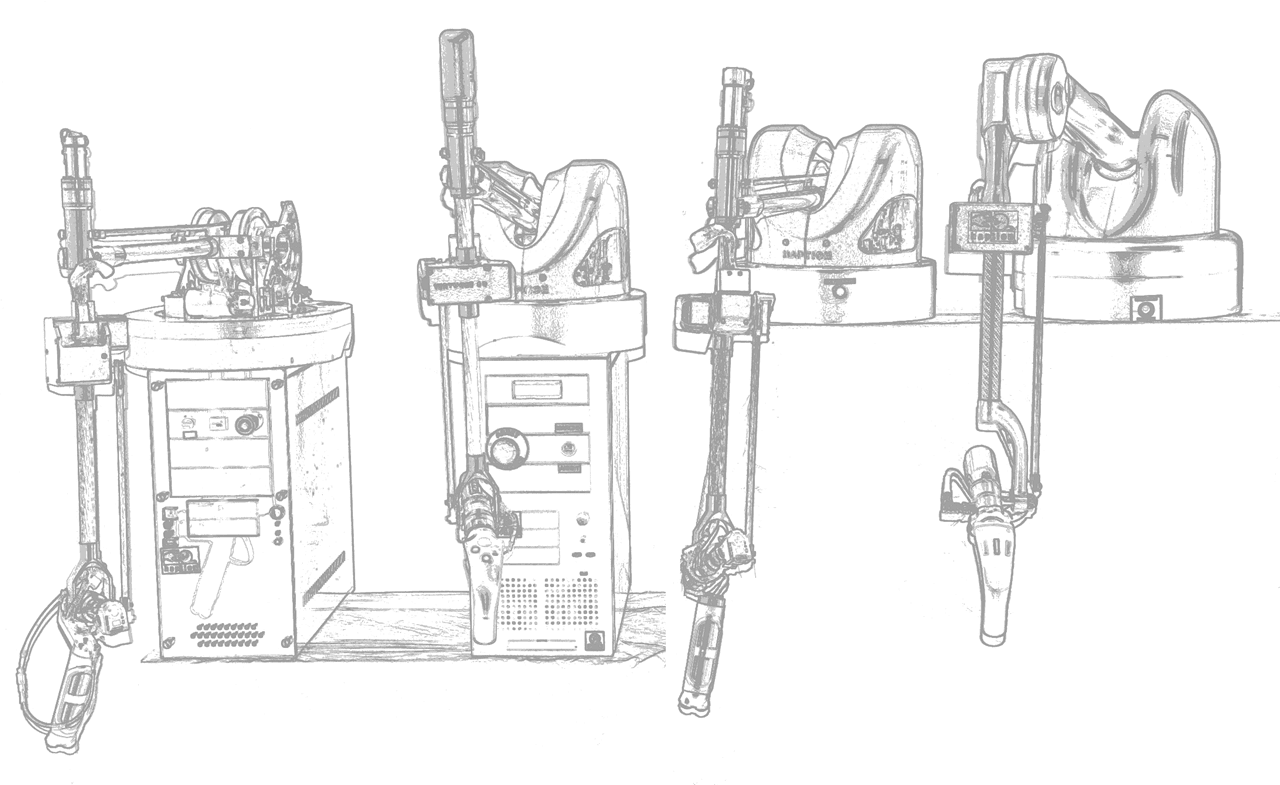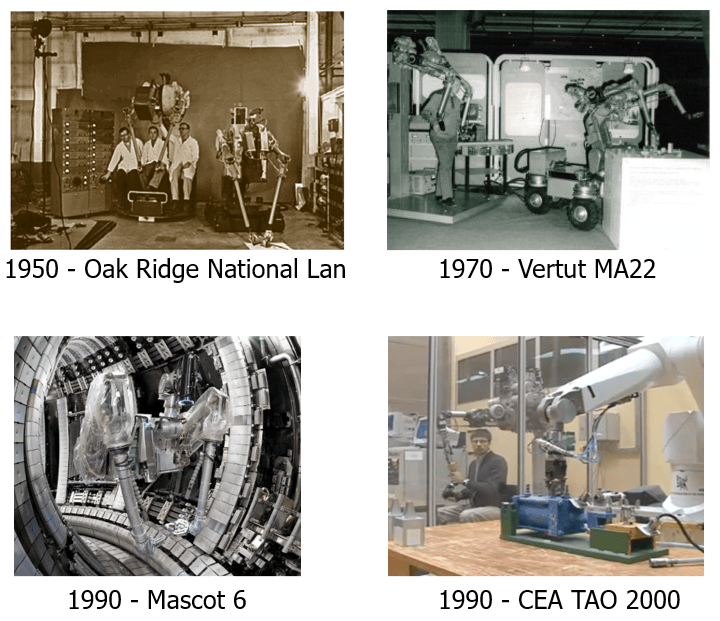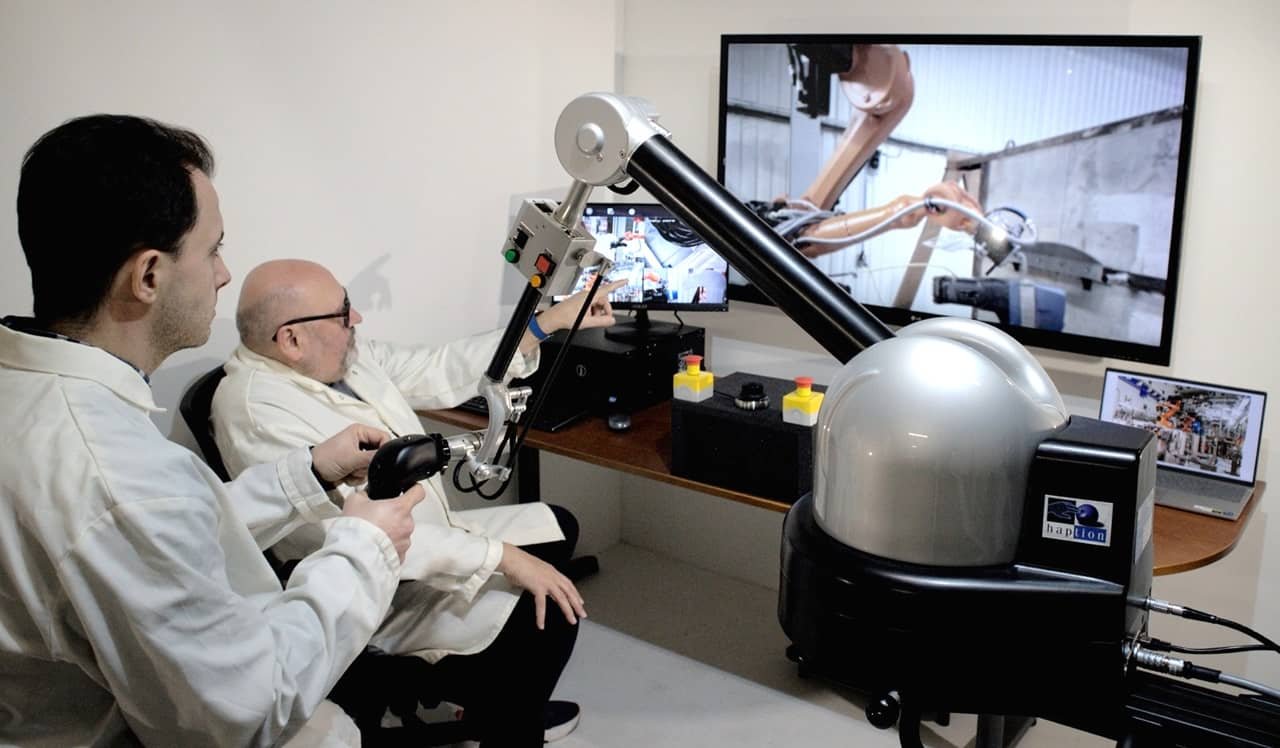About force-feedback technology
What is Force Feedback Device ?
A force-feedback device is a type of haptic device designed to provide users with a controlled force that delivers a realistic sensation of interaction.
By providing muscular feedback, the device enables user to feel resistance, pressure, and contact.
Applications of force-feedback devices
Robotic Teleoperation
In robotic teleoperation, a force-feedback device is a control interface for interaction between a human operator and a remote robotic system. This technology is essential in tasks where precise manipulation and operator skills is required, such as with an remote robotic arm in hazardous or constrained environments.
Virtual Reality Simulation
In virtual reality (VR, AR, XR), a force-feedback device enhances immersion by allowing users to perceive the sensation of resistance and contact when interacting a virtual object in a virtual environment
Industrial and Nuclear Operations
In highly constrained domains, such as nuclear and industrial activities, force-feedback devices function as master manipulators for remotely controlling slave robots, ensuring safety, efficiency and effectivity in hazardous environments.
Engineering
Simulations, such as assembly planning process, can be improved using force-feedback device allowing to anticipate issues and solutions before manufacturing phase.
Medical and Surgical Applications
In the medical field, especially in surgery, force-feedback devices provide surgeons with the ability to sense push and pull forces, as well as detect tissue tension and pressure.
Research and Innovation
Force-feedback devices are valuable in many research domains, supporting projects in teleoperation, simulation, and, in specific scenarios, serving as high performances co-manipulation robotic system for collaborative tasks.
Professional Features of Force-Feedback Devices
For professional use, force feedback devices are designed with:
High force performance for quality and stability of the feedback.
1kHz update rate for realistic sensation.
6 degrees of freedom to allow natural and versatile movement.
Professional technical support to ensure project success.
Force feedback devices are indispensable tools in diverse fields, offering unparalleled interactivity and realism in both robotic and virtual interactions.
What is an professional example of force feedback?
Force feedback is used to deliver realistic force sensations, enhancing interaction with physical or virtual environments. Here are examples for various applications:
Virtual Reality Simulation
Used to deliver an intuitive and immersive experience that can be immediately understood and felt by users.
Force-feedback devices are widely used in professional fields to provide enhanced control and immersion.
Robotics
Enables intuitive, immediate and rich control of a robot, enabling operators to operate efficiently with minimal training.
Force-feedback devices are effectively used in hazardous environments and industrial factories to enhance working conditions.
Medical
Medical practitioner and surgeons use force feedback to use their sense of touch during operations.
Also, they can enhance learning efficiency by using a realistic and immersive training system to train on medical procedures.
Research
Researchers use force feedback to analyse human behaviors in realistic and immersive system.
What is force-feedback technology?
Force-feedback technology is an ideal integration of mechatronics, combining proven mechanical concepts with electronic control, measurement systems, and real-time software.
Force-feedback technology was invented to face the challenges of space exploration and nuclear energy.
In such activities, the environment was unpredictable and no human can realize the tasks there. An operator was controlling remote robotic system using it skills.
To improve the control, the best solution is to bring the control system as much possible to realistic senses for the operator : the vision, the sound but also the touch!
From these projects born force-feedback devices, now used in wide applications and being available for everyone.
Evolution of Haption force-feedback product “Virtuose 6D” from 2001 to now
Issued from CEA List, Haption was created in 2001 with the intuition that force feedback is the ultimate interaction experience in interactive simulation and telerobotics and that in the long term, it will become an ordinary feature.
For the time being, it already helps customers to save time and money in their development and work.
Recognized as being an innovative company in Simulation and TeleRobotics, Haption develops, manufacture and sells hardware and software solutions using force feedback: Haptic interfaces, Bilateral force control software, Real-Time physics simulation for professional applications.
Among Haption customers references : Daimler (Mercedes benz), Volvo, Stellantis, Toyota, Tesla, Airbus, Orano, UKAEA, RACE, CERN, …
Haption flagship product “Virtuose 6D TAO High Force”
What is force feedback in haptics?
Haptic technology is technology that can create an experience of touch by applying forces, vibrations, or motions to the user.
Force feedback is the haptic technology that is applying forces to the users.
In haptic, force feedback is usually perceived as quite accurate :
If you are holding an object in your hand, even while blindfolded, you can distinctly feel when the object collides with its environment.
“If you are blindfolded and holding a simulated 1kg weight, you can feel that it is neither 10kg nor 100g.”
whereas with haptic vibrations on your finger, such as smartphone ones, it is very difficult to agree about each one sensation.
Feeling the weight and the collisions
Feeling the collisions between object and its environment
Force-feedback technology can be integrated with other haptic technologies.
Force-feedback devices can be integrated with other haptic technologies, such as haptic gloves, as well as other devices like visual, olfactory, and auditory systems, to enhance realism and improve feedback for efficient operator control.
Force feedback enhancing haptic gloves experience
Force feedback in a multimodal cockpit
What is force feedback in robotics?
In industrial robotics, force feedback is essential for applications where operator skills and dexterity are required.
By integrating force feedback into robotic systems, operators can sense physical changes as they interact with remote tools to achieve the tasks.
This creates a more intuitive and efficient way to realize operations, particularly in hazardous environments or complex operations.
Benefits of Force Feedback in Robotics:
Improved Control
Increased Safety
Enhanced Productivity
Incorporating force feedback into robotic systems represents a major advancement in robotic control technology, improving the way industries operate their process.
Robotic system teleoperation in hazardous environment
Robotic system enhancing safety & working conditions





